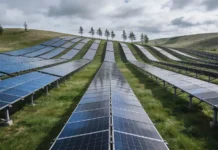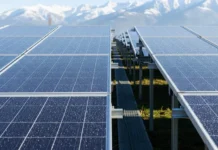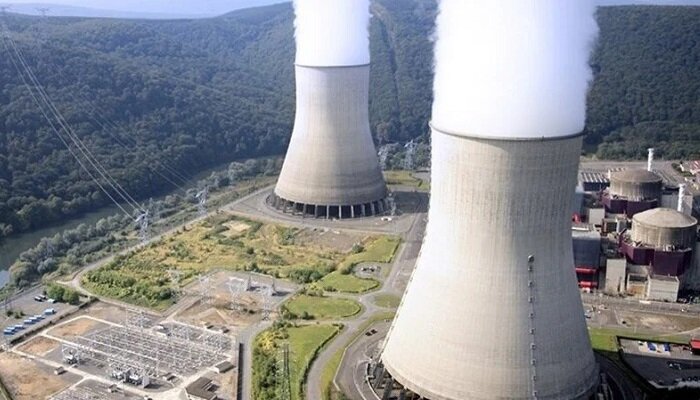The United States saw a historic moment in the first half of 2024 as electricity generated from solar and wind farms combined exceeded output from nuclear plants for the very first time. This firmly establishes renewable energy assets as the leading source of clean power in the country.
Obtain accurate speed and consumption profiles for all your vessels with the Shipmaster’s Bunkering Manual.
Data from the energy think tank Ember reveals that electricity generation from utility-scale solar and wind assets reached a record 401.4 terawatt hours (TWh) in the first half of 2024, compared to 390.5 TWh from nuclear reactors. This marks the first instance over a half-year period where renewable electricity supplies surpassed nuclear-powered electricity output, signalling a significant milestone in US energy transition efforts.
The rapid expansion of solar and wind capacity by utilities suggests that 2024 will likely be the first full year where the majority of U.S. electricity will come from renewables as opposed to any other form of clean power.
Between 2015 and the end of 2023, combined monthly electricity generation from utility-operated solar and wind farms only exceeded output from US nuclear plants on three occasions: in April and May 2022, and also in April 2023, as per the Ember data.
This year, solar and wind output has surpassed nuclear output for the past four consecutive months, resulting in solar and wind output surpassing nuclear output by nearly 3%. In the same half-year period a year ago, nuclear-powered electricity output exceeded electricity output from solar and wind sources by more than 9%, showcasing the rapid growth in renewable energy output.
During the first half of 2024, electricity generation from solar facilities was 149.6 TWh, while wind farms produced 251.7 TWh. These figures represent a 30% increase for solar and a 10% increase for wind compared to the same period in 2023, marking record outputs for the first half of the year.
The Weekly Container Index indicates that nuclear electricity generation during the first half of 2024 was 3.4% higher than the same period in 2023, but slightly lower than the latter half of 2023. This suggests that US nuclear generation may not have substantial room for further growth in the near to medium term.
Installed capacity plays a crucial role in determining electricity generation potential across the U.S. Over the past five years, capacity growth in renewables has far outpaced capacity growth from all other power sources. From 2018 to 2023, utility solar generation capacity surged by 168% to 139 gigawatts (GW), while wind capacity increased by 56% to 148 GW, according to Ember. This stands in contrast to a nearly 4% decrease in national nuclear generation capacity and a 40% rise in overall clean electricity generation capacity to approximately 483 GW. Total fossil fuel generation capacity decreased by 3.7% from 2018 to 2023 to around 775 GW, including a 23% reduction in coal-fired generation capacity.
Developers are aiming to add an additional 34 GW of solar capacity in 2024, while wind generation capacity is expected to remain relatively stable, according to the EIA or U.S. Energy Information Administration. If these plans come to fruition, solar capacity would likely exceed wind capacity for the first time, leading to a significant increase in solar electricity generation. In light of the anticipated stable growth in U.S. nuclear generation, the combined potential for solar and wind generation appears poised to make further gains relative to other forms of clean power, solidifying renewables as the primary source of clean electricity in the U.S.









































